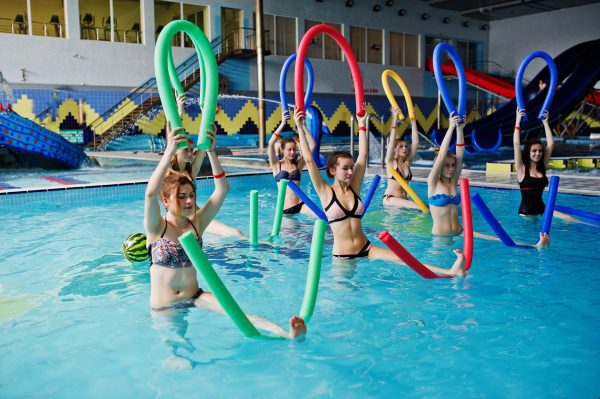Pool noodles are versatile and colorful flotation devices that add endless fun and excitement to pool time. While they’re commonly used for floating and lounging, pool noodles can also be repurposed for a variety of entertaining activities both in and out of the water. In this article, we’ll explore 10 creative and fun things to do with a pool noodle, guaranteed to enhance your poolside experience and keep everyone entertained for hours on end.
1. Noodle Jousting:
Challenge your friends or family to a friendly game of noodle jousting. Each participant sits on a pool noodle and tries to knock their opponent off their noodle using another noodle as a jousting lance. The last one remaining on their noodle wins!
2. Pool Noodle Limbo:
Set up a pool noodle limbo station by holding two pool noodles horizontally at different heights. Participants take turns bending backward and attempting to pass under the noodles without touching them. Lower the noodles after each round to increase the difficulty.
3. Noodle Races:
Organize noodle races by dividing participants into teams or individuals and having them race across the pool while balancing on pool noodles. The first one to reach the other side wins the race. Add obstacles or challenges for an extra twist!
4. Noodle Basketball:
Create a makeshift basketball hoop using a poolside railing or anchored pool noodles. Use a pool noodle as the basketball hoop and have participants take turns shooting pool noodle basketballs into the hoop from various distances.
5. Noodle Sculptures:
Unleash your creativity by building elaborate sculptures and structures using pool noodles. Challenge participants to construct the tallest tower, the most intricate maze, or the most imaginative creature using only pool noodles and other poolside accessories.
6. Noodle Raft Building:
Work together with friends or family to build a floating raft or platform using interconnected pool noodles. Once assembled, test the stability and buoyancy of the noodle raft by having everyone climb aboard and see how long it can stay afloat.
7. Noodle Tic-Tac-Toe:
Draw a large tic-tac-toe grid on the pool deck using chalk or tape. Use different colored pool noodles as X’s and O’s, and take turns placing them on the grid to form three in a row vertically, horizontally, or diagonally.
8. Noodle Obstacle Course:
Design a challenging obstacle course around the pool area using pool noodles as obstacles, hurdles, and markers. Participants must navigate through the course while overcoming various noodle-based challenges, such as crawling under noodles, jumping over hurdles, or balancing on floating noodles.
9. Noodle Fishing:
Turn pool noodle pieces into DIY fishing rods by attaching string or fishing line to one end and a clothespin or paper clip to the other end as a hook. Scatter floating objects or pool toys in the water and challenge participants to “fish” them out using their noodle fishing rods.
10. Noodle Ninja Warrior:
Create a ninja warrior-inspired obstacle course using pool noodles as swinging bars, balance beams, and hanging ropes. Participants must navigate through the course while avoiding falling into the water or touching the ground, testing their agility and balance.
Conclusion: From friendly competitions and creative challenges to imaginative games and team-building activities, there are endless possibilities for fun and entertainment with pool noodles. Whether you’re enjoying a leisurely day by the pool or hosting a poolside party, incorporating these 10 creative ideas will surely elevate the excitement and enjoyment for everyone involved. So grab your pool noodles and get ready for a splashing good time!
